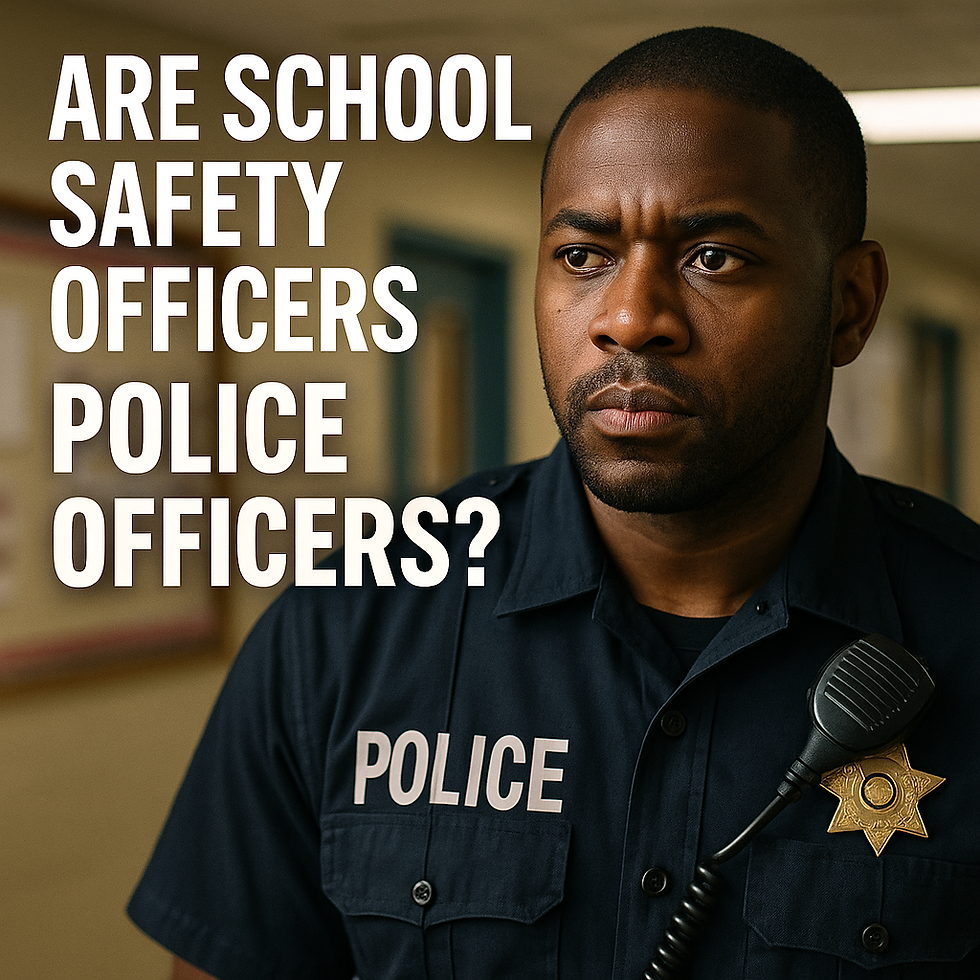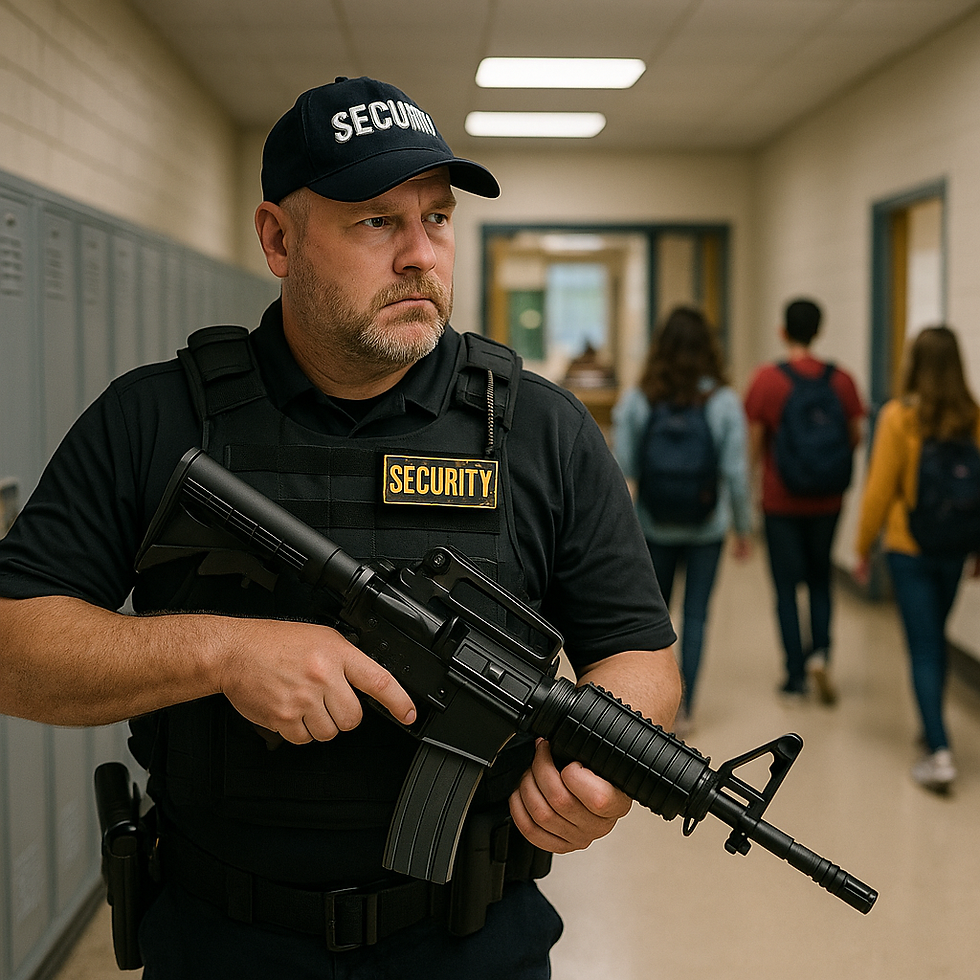Are School Safety Officers Police Officers?
- CrisisWire

- Sep 30
- 3 min read
The Uniform Illusion
When parents see a uniformed safety officer on campus, they often assume law enforcement is present. Principals may feel reassured. Students may feel protected — or policed.
But here’s the truth: most school safety officers are not sworn police officers. They may wear uniforms, carry radios, and patrol hallways, but they do not hold the same legal powers or training as law enforcement. This blurred line creates dangerous misunderstandings in both crises and daily school life.
The Difference Between SSOs and Police Officers
Sworn Authority: Police officers are sworn, state-certified, and empowered with arrest authority. School safety officers (SSOs) usually are not.
Training Standards: Police undergo academy training, weapons certification, and ongoing scenario-based training. SSOs may receive only minimal de-escalation or security instruction.
Scope of Duty: Police enforce state laws and criminal codes. SSOs focus on school policy, supervision, and safety compliance.
Weapons and Gear: Some SSOs are unarmed; others may carry pepper spray or tasers. Firearms are generally restricted unless the officer is a sworn SRO (School Resource Officer).

Case Studies: When Confusion Creates Liability
New York City DOE (2021): Thousands of “school safety agents” wore NYPD-style uniforms but were not police. Students and parents routinely misinterpreted their role.
Parkland, Florida (2018): The armed SRO was a sworn deputy, but debates after the tragedy blurred the role of SROs vs. non-sworn campus monitors. Many districts expanded SSOs without clarifying powers.
Los Angeles (2020): Budget cuts led to replacing sworn school police with civilian “climate coaches.” Parents were left uncertain about the actual security provided.
👉 OSINT Angle: A quick search via OSINT Framework surfaces dozens of districts posting job ads for “School Safety Officer” positions. These often reveal minimal qualifications — sometimes only a high school diploma — compared to sworn law enforcement standards.
Why It Matters: Leadership Blind Spots
Parents Misled: Thinking sworn law enforcement is present when it isn’t.
Liability Gap: Expecting SSOs to respond to active shooter events beyond their training.
Cultural Consequences: Students may feel “policed” by uniforms without accountability mechanisms.
Insurance Risks: Coverage may not extend if unarmed SSOs are expected to fulfill law enforcement roles.
The Leadership Checklist
Clarify Roles Publicly Communicate to parents, staff, and students the difference between SSOs and sworn police.
Audit Training Standards Review SSO training in de-escalation, behavioral threat recognition, and emergency response.
Integrate with Local Law Enforcement Ensure SSOs know how to coordinate and call in sworn officers quickly.
Avoid Symbolic Security Don’t confuse uniforms for preparedness. Invest in layered systems: access control, mass notification, threat assessment.
Document Liability Boards must record policies clarifying what SSOs can and cannot do — or face exposure after an incident.
Leadership Responsibility
Safety is not an illusion. Dressing civilians in uniforms without law enforcement authority does not equal protection. Leaders who blur the line between “safety officer” and “police officer” risk lawsuits, parent mistrust, and — most dangerously — delayed responses in crises.
Parents deserve transparency. Students deserve real protection. Leaders must close the gap.
If your district employs school safety officers, ask the hard question: Are they truly trained and empowered, or just symbolic security?
Read more in:
Contact CrisisWire for audits, training frameworks, and leadership guidance on school safety strategy.





Comments